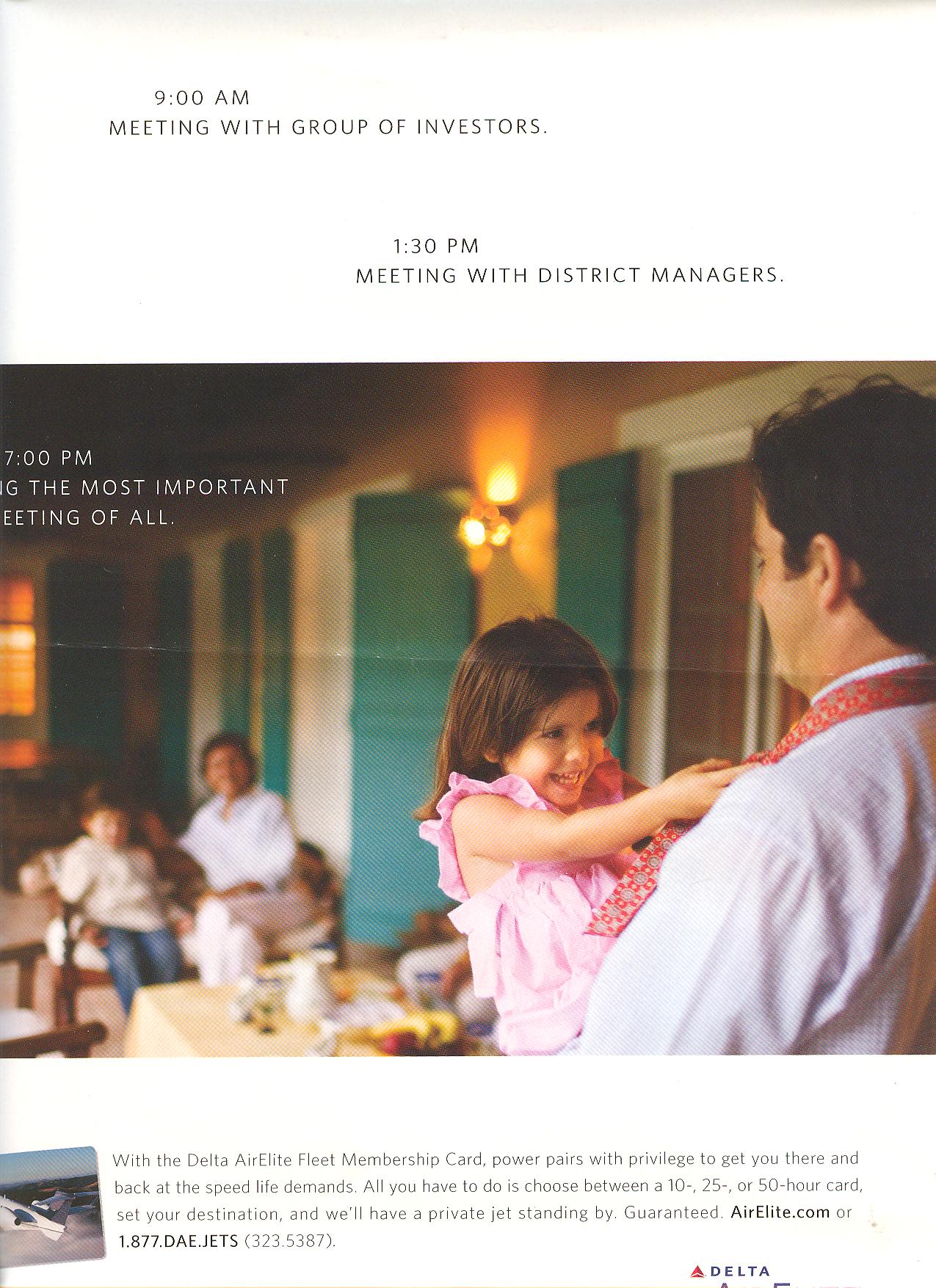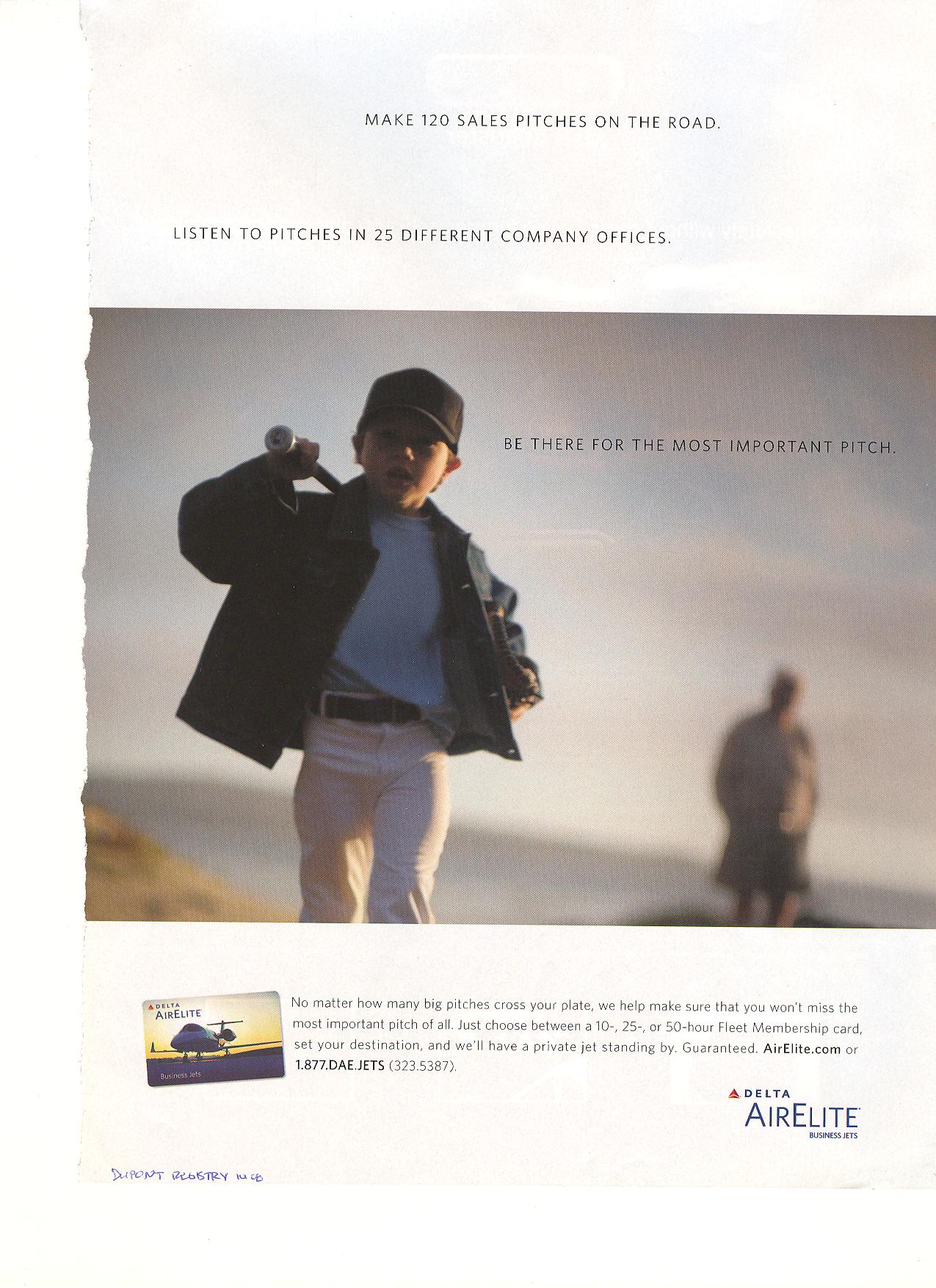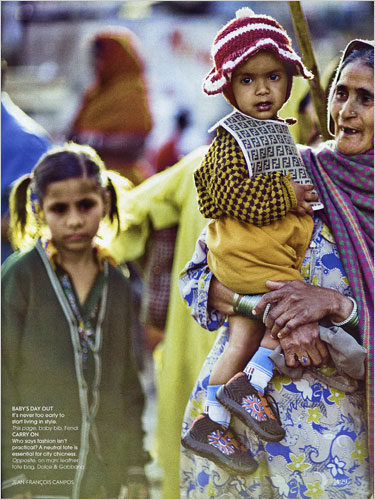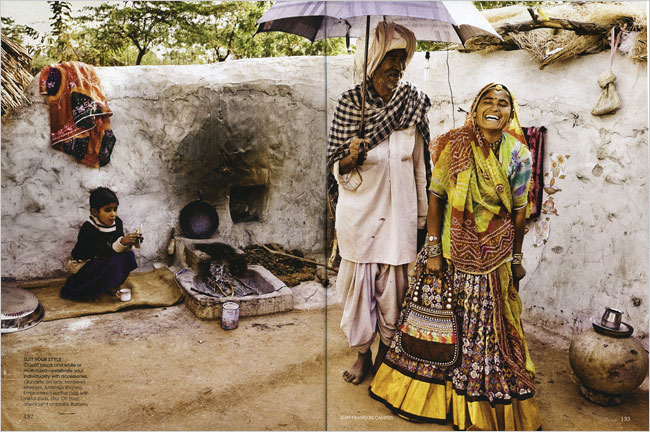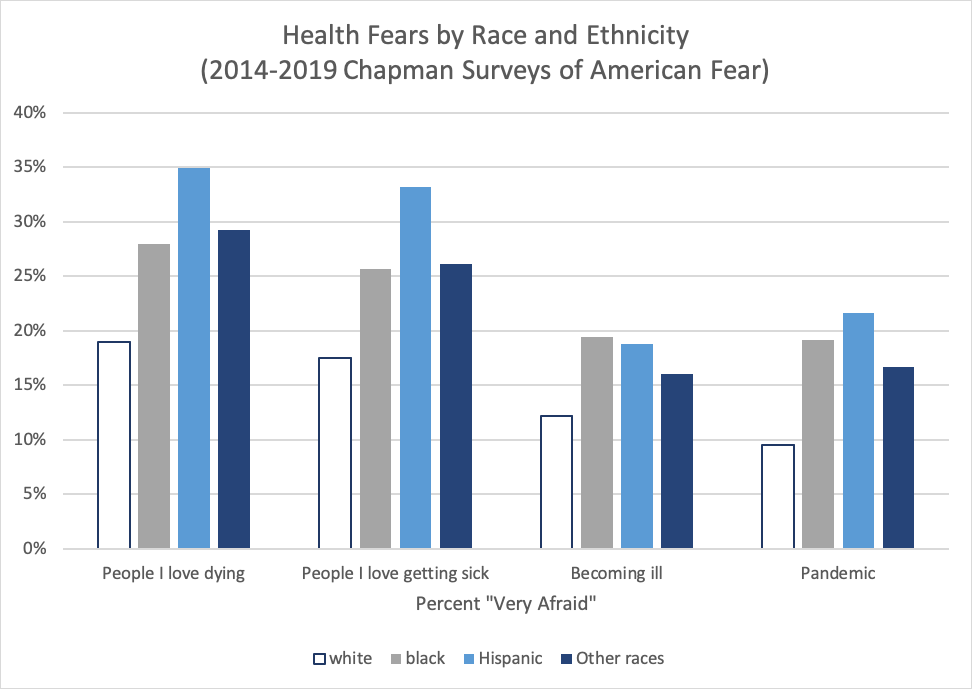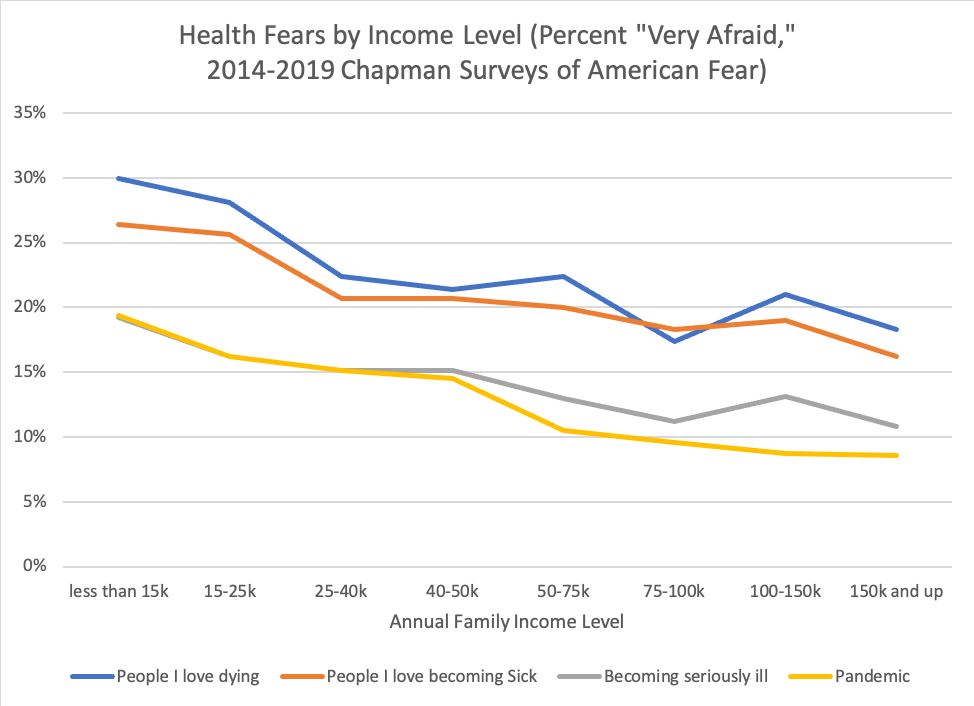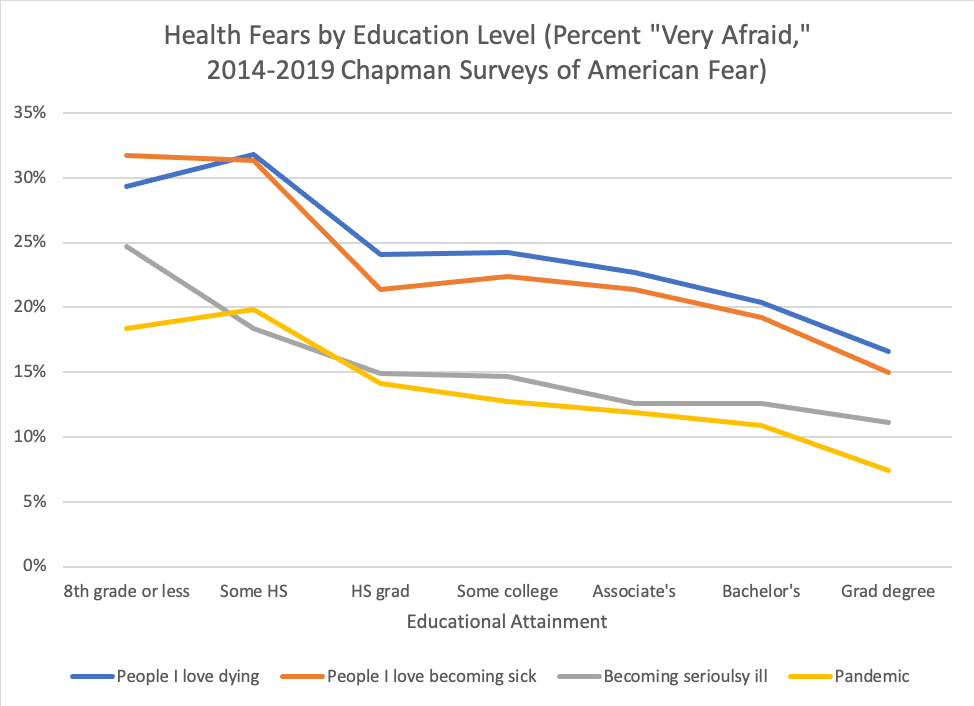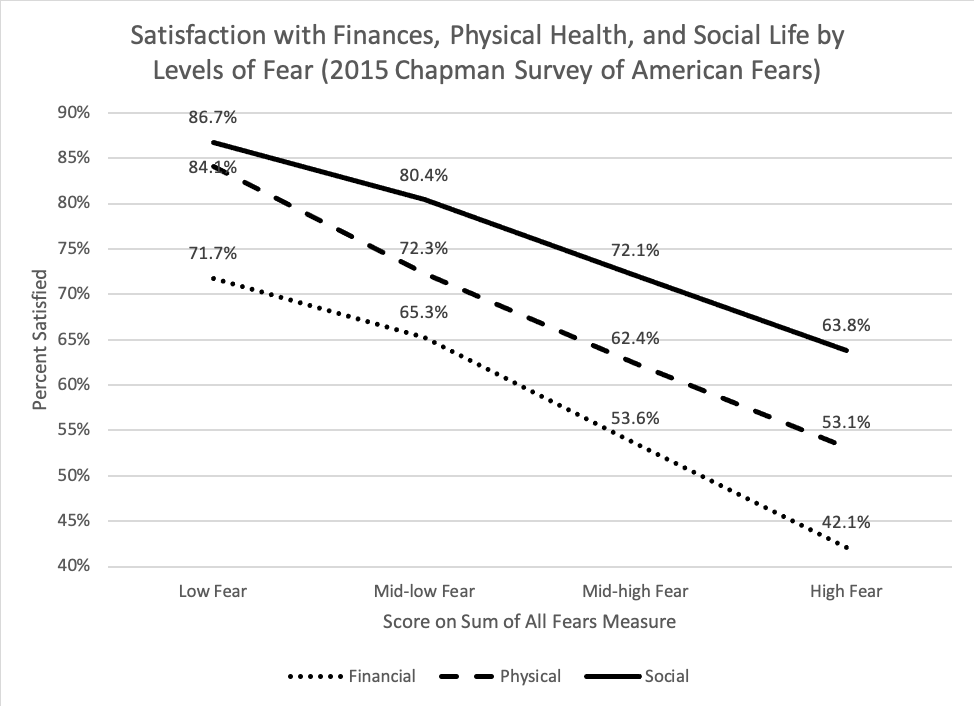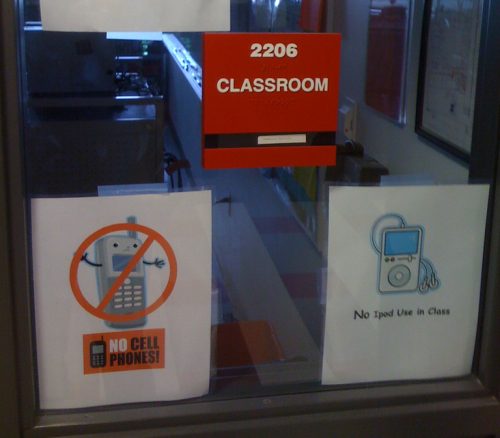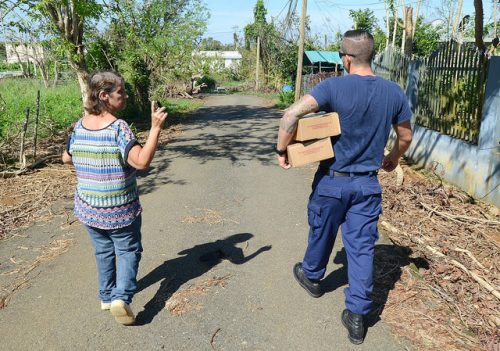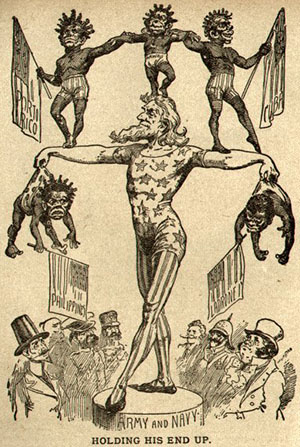I found these three ads for a private jet service in those magazines for excrutiatingly excruciatingly rich people that I’ve been posting from lately. Each ad–one for Marquis Jet and two for Delta AirElite–are pitching their service by suggesting that having a membership in their private jet service will help them be a good Dad because they can get home–for dinner, the game, or some quality time–from anywhere fast. Comments below.
Text:
It’s not just a card.
It’s a choice.
A choice to escape from it all.
A choice to get closer to what’s important.
9:00AM. Meeting with group of investors.
1:30PM. Meeting with district managers.
7:00PM. The most important meeting of all.
Text:
Make 120 sales pitches on the road.
Listen to pitches in 25 different company offices.
Be there for the most important pitch.
It’s pretty unusual to see ads that highlight a Dad’s relationship with his children. And that’s pretty neat. But, second, the implication is that only men at the extremes of economic success can “afford” to be an ideal father. Hypothetically, I wonder how many people working for that Dad have the privilege of taking a private jet and getting home in time for dinner? My guess would be: Very few. In that sense, these ads uphold the idea that men’s primary role in their children’s lives involves bringing home the bacon and, if you’re really, really, really good at that (and really, really lucky and, likely, very privileged to begin with), you get to be a part of their lives too.
Lisa Wade, PhD is an Associate Professor at Tulane University. She is the author of American Hookup, a book about college sexual culture; a textbook about gender; and a forthcoming introductory text: Terrible Magnificent Sociology. You can follow her on Twitter and Instagram.


